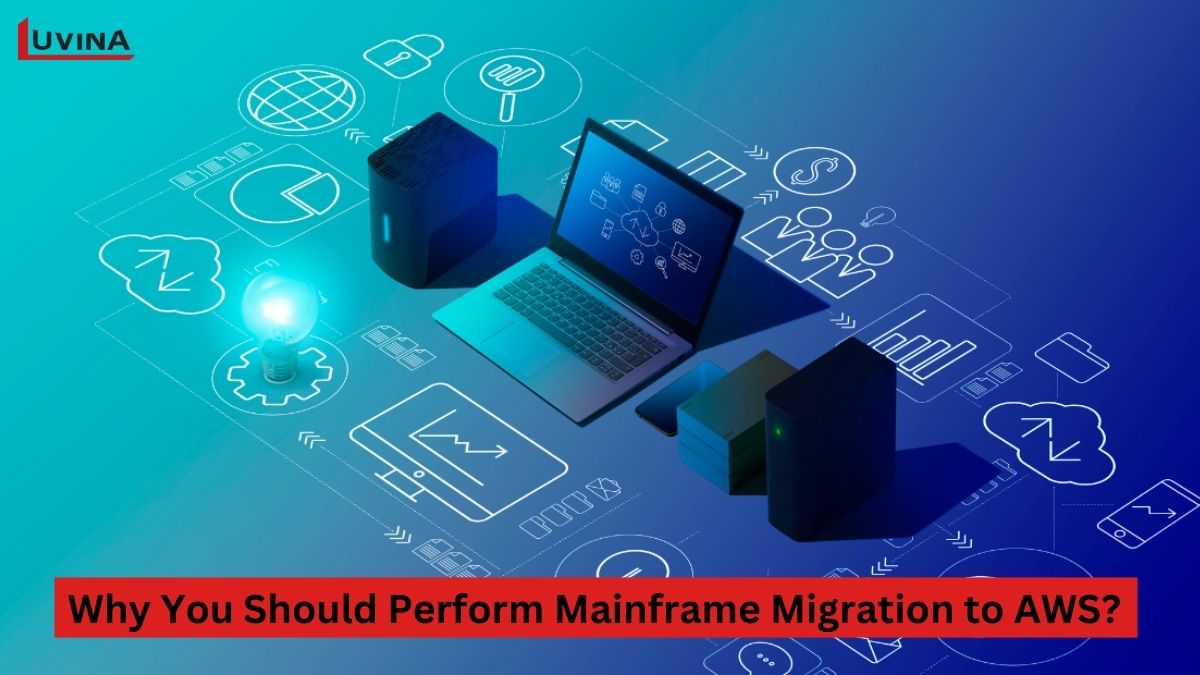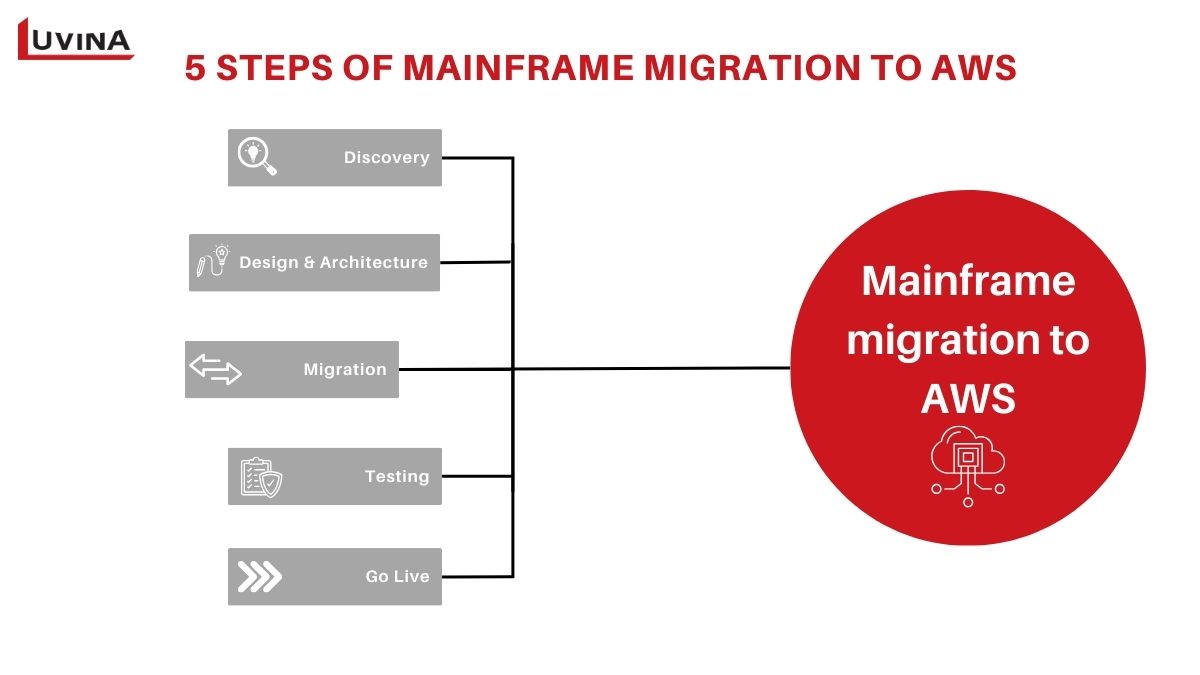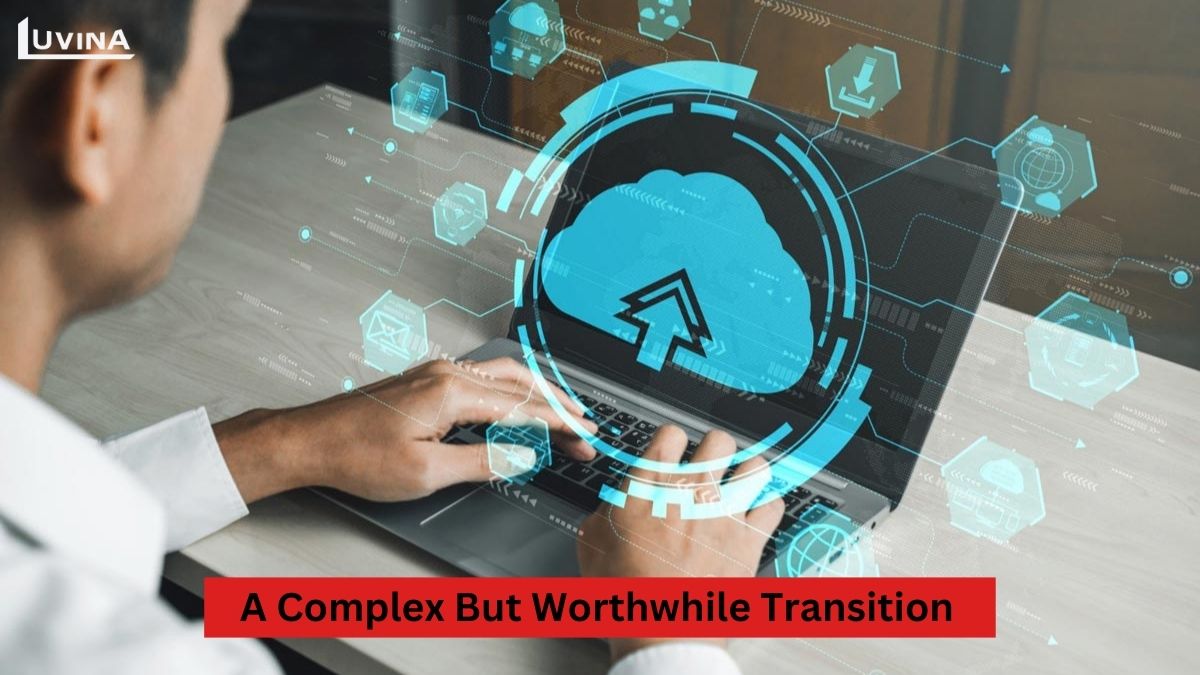In the digital age, rigid and costly mainframe systems are no longer the best option for businesses. Meanwhile, mainframe migration to AWS, which can cut costs by up to 50%, offers a much brighter path forward. To help you better understand the complex process of transitioning from mainframes to AWS, this article will detail the five essential steps for making the switch. Keep reading to discover!
Benefits of mainframe migration to AWS
Migrating mainframes to AWS is a complex process that requires significant time and effort. However, the positive impacts of transitioning to AWS will not disappoint you. Below are some of the benefits that mainframe migration to AWS can offer your business.
1. Speed of Innovation
AWS offers unmatched agility, allowing businesses to innovate quickly and enhance customer experiences. It enables companies to move away from rigid mainframes and outdated systems, offering horizontal scalability and handling workload peaks with minimal unused capacity. AWS’s multiple protocols and interfaces help unlock and integrate mainframe data.

2. Cost Savings
Mainframe to AWS cloud migration can cut costs by 60%-90%, providing flexibility for experimentation and innovation. It eliminates data silos, making mainframe data accessible to more stakeholders and enabling the use of advanced analytics tools. AWS also allows you to pay only for what you use, saving on expensive infrastructure.
3. Improving Reliability and Performance
Mainframe migration to AWS has been proven to help businesses improve performance.. AWS delivers 2X to 3X better performance compared to competitors, with lower downtime and enhanced geographic coverage.

4. Experiencing Powerful Tooling and Automation
AWS can re-host legacy applications without changes, while modernization enables the use of modern languages like Java. Therefore, mainframe to AWS migration helps address the mainframe skill gap and attracts new talent for modernizing core business workloads.
Migrating Mainframe to AWS in 5 Steps
As mentioned earlier, mainframe migration to AWS is a complex process that requires considerable time. However, fundamentally, this process involves several core stages combined with additional steps depending on the service provider’s migration approach. If your company is planning to migrate its mainframe to AWS, here are five essential steps you must take to carry out this transition.

1. Discovery
The first phase in the mainframe migration to AWS process is Discovery. This involves cataloging and analyzing all components within your environment, including applications, programming languages, databases, networks, platforms, and processes. It’s essential to document the relationships between applications and their external integration points.
Automated analysis tools should be utilized to gather and store this data in a central repository, which facilitates easy management and evaluation of potential factors that might impact the migration. The information gathered during this phase helps establish migration rules within the automated transformation engine and assists in identifying any challenges or requirements that may affect subsequent stages.
2. Design & Architecture
The Design & Architecture phase requires a thorough analysis of the source code, data structures, and AWS cloud components to craft a comprehensive solution. This design should detail aspects such as the types and instances of AWS components, transaction loads, batch requirements, and programming language conversions or replacements.
Selecting migration tools that require minimal changes is crucial to reduce costs and risks. If existing tools do not fully meet the requirements, custom solutions will need to be designed. Additionally, defining a data migration strategy is essential, which may include converting hierarchical data to relational formats using transformation tools or extract-transform-load (ETL) programs. This stage of mainframe migration aws is critical for ensuring that the new architecture supports both current and future business needs effectively.
3. Migration
During the Migration phase of mainframe to AWS cloud migration, changes to the source code are made and tested iteratively. The process involves running modified code through unit tests, addressing any errors that arise, updating migration rules as needed, and re-running the programs. Economies of scale are often realized when error fixes are applied across multiple programs. It is essential to develop a detailed migration plan that includes role assignments, schedules, and strategies for data backup and disaster recovery.
The plan should also account for specific strategies such as retiring outdated applications, retaining certain mainframe functionalities, replacing systems with commercial-off-the-shelf (COTS) or SaaS solutions, or rehosting and re-platforming. Close monitoring and adjustments are necessary to ensure the migration proceeds smoothly and meets all specified objectives.
4. Testing
The Testing phase of mainframe migration to AWS focuses on verifying changes to the code and any affected areas. Given that most legacy applications lack extensive test scripts and documentation, developing new test scripts may be necessary, though this investment is worthwhile for future testing. Testing should concentrate on data access, code modifications due to data type changes, and any new code developed.
Additionally, load and stress testing are required to ensure the applications can handle high volumes of data. Training the technical team on problem-resolution processes and understanding the vendor’s resolution and bug-tracking procedures is crucial to minimize downtime and resolve issues efficiently.
5. Go Live
In the Go Live phase, you deploy the applications that have been tested, verified, and optimized. Many deployment activities, such as creating and configuring AWS instances, installing mainframe emulation software, and migrating static data, can be initiated in parallel with earlier tasks. Once dynamic data is migrated and validated, the transition to production mode is completed. It’s important to check in with stakeholders and users to confirm that everything is functioning correctly.
Documenting and evaluating lessons learned during this phase when you migrate mainframe to AWS will provide valuable insights for future projects and ensure that the new environment meets the project’s objectives effectively.
Conclusion
Markets and technology are in constant flux, continually evolving. By leveraging the technologies and services offered by cloud providers like AWS, forward-thinking businesses can rapidly adapt to market demands and gain a competitive edge. Although mainframe migration AWS may appear to be a formidable and overwhelming task, with thorough planning, management, and execution, the benefits can be substantial.

If you are considering a mainframe migration to cloud, get in touch with Luvina today. We are prepared to deliver the most innovative and tailored solutions to meet your needs.
- Cloud migration is a fundamental step for businesses aiming to leverage the power, scalability, and flexibility of cloud computing. Luvina is dedicated to helping clients smoothly and effectively transition their data, applications, and business services to the cloud. With our committed and skilled team, we promise to lead your transformation journey, driving your business toward sustainable growth and success in the digital era.
- Cloud Modernization allows businesses to enhance their cloud systems and services to improve performance, efficiency, and scalability.
With a team of experts knowledgeable in cloud modernization services, Luvina Software offers solutions to improve your existing cloud infrastructure, adapt to changing business environments, and stay ahead of competitors. We are ready to take on your project today! Management support, please contact Luvina for detailed advice.









Read More From Us?
Sign up for our newsletter
Read More From Us?
Sign up for our newsletter